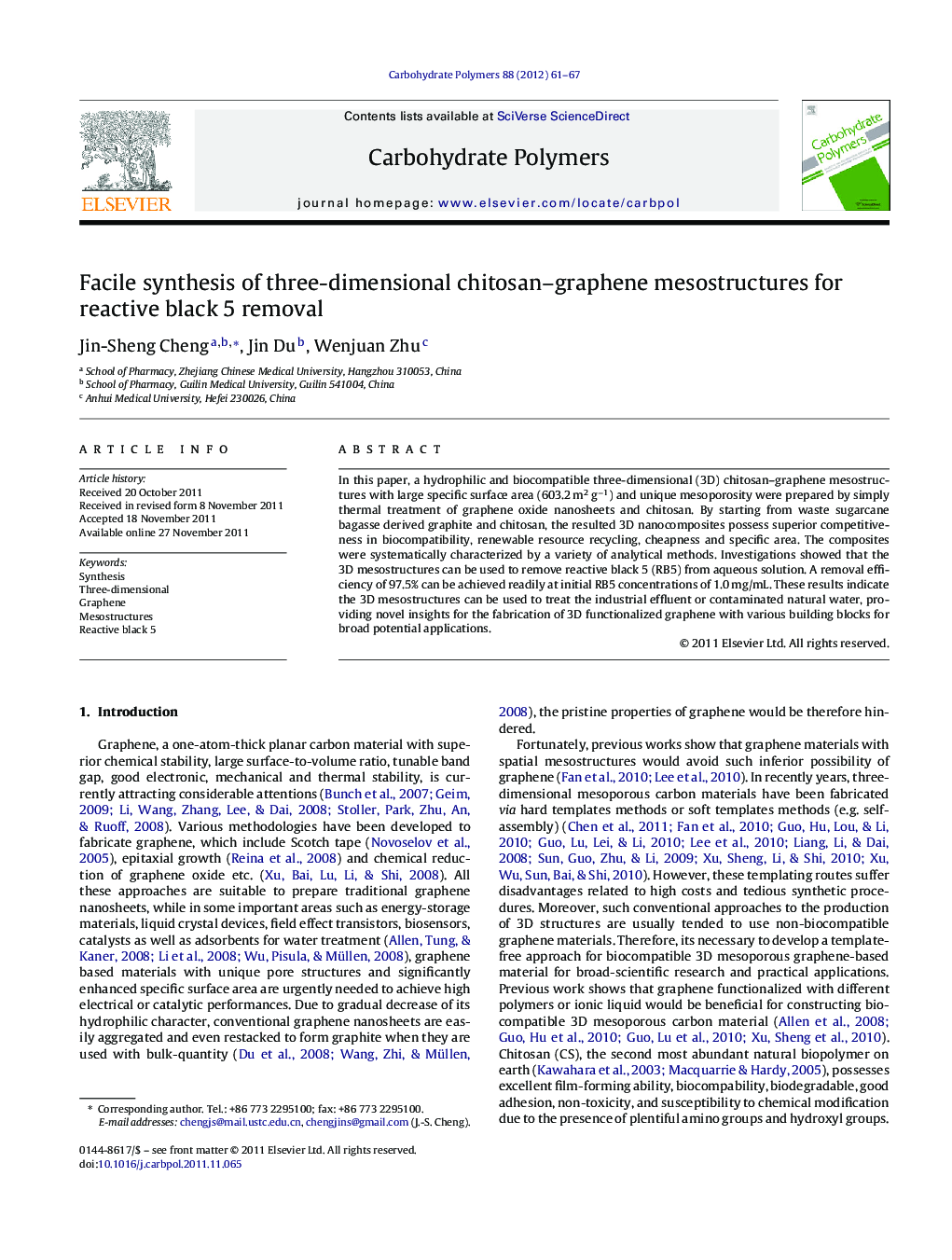| Article ID | Journal | Published Year | Pages | File Type |
|---|---|---|---|---|
| 1384934 | Carbohydrate Polymers | 2012 | 7 Pages |
In this paper, a hydrophilic and biocompatible three-dimensional (3D) chitosan–graphene mesostructures with large specific surface area (603.2 m2 g−1) and unique mesoporosity were prepared by simply thermal treatment of graphene oxide nanosheets and chitosan. By starting from waste sugarcane bagasse derived graphite and chitosan, the resulted 3D nanocomposites possess superior competitiveness in biocompatibility, renewable resource recycling, cheapness and specific area. The composites were systematically characterized by a variety of analytical methods. Investigations showed that the 3D mesostructures can be used to remove reactive black 5 (RB5) from aqueous solution. A removal efficiency of 97.5% can be achieved readily at initial RB5 concentrations of 1.0 mg/mL. These results indicate the 3D mesostructures can be used to treat the industrial effluent or contaminated natural water, providing novel insights for the fabrication of 3D functionalized graphene with various building blocks for broad potential applications.
► Three-dimensional graphene mesostructures with large specific area were prepared. ► Graphene oxide was prepared from waste sugarcane bagasse derived graphite. ► The 3D material holds advantages in mesoporous, biocompatibility and cheapness. ► The pristine properties of graphene can be preserved in this 3D mesostructures. ► The material show high efficiency for reactive black 5 removal, a typical azo dye. ► This 3D material holds great potentials in treating the industrial effluent etc.
